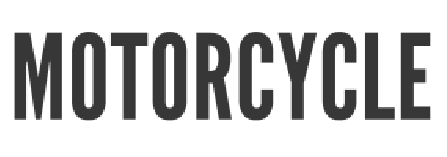Whether you bought a membership at the gym, signed up for a boot camp, or bought some workout gear to use at home, you may wonder about some of the key elements of establishing a good, solid fitness routine.
9 Of The Most Frequently Asked Questions About Developing A Proper Fitness Regime.
How often should I work out?
I go by the theory that doing something every day is good, but that doesn't mean it has to be something strenuous either. A boot camp style work out one day, ride your bicycle to work one day, take the dog out for a walk, just get out and move that body.
Of course, only you know your own level of fitness and can judge what is best for you personally. If not and you're a total newbie or have medical issues, you certainly should see a doctor first and get some professional advise on what is and isn't best for you and your body.
Ideally, you want to get your heart rate up to a specific level, and keep it up for a specific amount of time in order to get any benefit. Most fitness advocates suggest an aerobic work out 3 times a week for a total of 2.5 hours, increasing your target heart rate up to no less than 50% (as a newbie) and working your way in to the 85% range when you become fitter.
Check out this great link for
calculating heart rates.
How long should I work out?
Again, this will all depend on your initial level of fitness and will change as your fitness level increases. One could use the Borg Rating System as a gauge...
The Borg Rating of Perceived Exertion (RPE) is a way of measuring physical activity intensity level. Perceived exertion is how hard you feel like your body is working. It is based on the physical sensations a person experiences during physical activity, including increased heart rate, increased respiration or breathing rate, increased sweating, and muscle fatigue. Although this is a subjective measure, a person's exertion rating may provide a fairly good estimate of the actual heart rate during physical activity* (Borg, 1998).....or by using the target heart rate, as established in the chart in the provided link. Again, you will have to ultimately determine what is a reasonable amount of time based on the advise from your doctor and your own judgement. Perhaps going back to the S.M.A.R.T. program and choosing something that is reasonable and attainable will be the the wisest choice.
When I first started, I did just that and chose a basic workout that seemed manageable. As mentioned, I had to adjust slightly and then made more adjustments as my level of fitness improved.
Based on the suggested 3 times a week for a total of 2.5 hours workout, logic would say that your sessions should last a minimum of 50 minutes per session.
Eventually you'll be like me and get to the point where you want to workout daily. In fact, it is so ingrained in me now that I actually feel agitated if my workout gets missed. By this stage you'll start to break your workouts into sessions, with some High Intensity, some Moderate Intensity and some Low Intensity. Rest days are important, so that low intensity workout might be the walk to the park with the dog, as mentioned previously.
Plan your workout schedule and it stands a better chance of being successful.
What is the best time of day to work out?
My answer to this is simple...when it's convenient and manageable! If you go by the premise that 'the only bad work out is the one you didn't do', then all you need to consider is that you go for a workout at whatever time works with your schedule, as long as you go!
No doubt there are plenty of theories on maximum benefits of working out in the morning or evenings or some other time, but again, what works best for you can only be determined by you.
What should I eat before and after a workout?
Obviously you don't want to be full and feeling bloated while working out, but you also need energy to get you through the session. It may take some experimentation to get the balance between the two right but, if you have time, try eating a small meal of 500-600 calories about 2-3 hours before hand. If not, something smaller like some fruit, 30-60 minutes before hand should work.
Carbs will help give you fuel to burn but you need a mixture of complex and simple ones to get a slow and steady release during the routine.
Try this great pre-workout snack...
Whole wheat toast with peanut butter and sliced bananas, with a sprinkle of cinnamon. A combo of complex and simple carbs. Bananas help raise potassium levels that drop when you perspire a lot. The cinnamon helps stabilize blood sugar and improves your brain functions.What about hydration and electrolytes?
Just like food is important to fuel your body for a workout, your body needs hydration to maintain its' function. You lose fluid through perspiration and your breath and need to be re-hydrating as you go, but having ample fluid in your system before you work out is just as essential.
- take in at least 500-600 ml of water in the one to two hour time period before your workout
- take in another 300-400 ml of water approx 15 minutes prior to starting
- every 15 minutes during the workout, take in 300-400 ml
- those who perspire more need to increase intake
Water lubricates your entire body and is critical to the chemical reactions created by exercise. reactions can be slowed, as well as recovery. Dehydration can cause dizziness, lethargy and cramping.
As for electrolytes found in sports drinks, the average person who works out for approximately an hour can get what they need just by drinking water.
What about soreness and the next workout?
I find that a light workout that helps get the blood flowing and increases circulation definitely helps sore and cramped muscles, as long as that's all that is ailing you and you're not actually injured. A circulatory workout followed by a good stretch. I workout at the world class
Repsol Centre in Calgary and after a workout like to alternatively use their steam room or hot tub, and cold tub for a bit of muscle flushing. Of course, this isn't everyone's cup of tea and you do need to be careful when participating in this type of activity
What is best, cardio or strength training?
I say that you need to do both and find some balance between them, as each has benefits. Certainly cardio usually burns fat faster and you are generally exercising one of the more important muscles in your body, that being your heart.
What is the best way to burn off fat?
As mentioned, cardio burns fat a bit faster, but either strength or cardio training, complimented by a proper diet and adequate sleep will do the trick.
Should I monitor my hear rate heart rate?
Going back to the point about getting checked by a physician before commencing a workout routine, they may be advise you to wear a heart rate monitor during your sessions. This may be a temporary requirement and there are other ways to determine if you're hitting an adequate workout level, such as the Borg method we also discussed earlier.
I occasionally wear my heart rate monitor, which is synced to my GPS watch, as a way to see how some of my runs and stair climbs compare to one another. It's also interesting to note how quickly I can get my heart rate down after peaking during a long stair climb or a sprint.
For additional thoughts and suggestions on an attainable workout routine, check out "S.M.A.R.T." and "Fat Is Your Friend (?)".



























